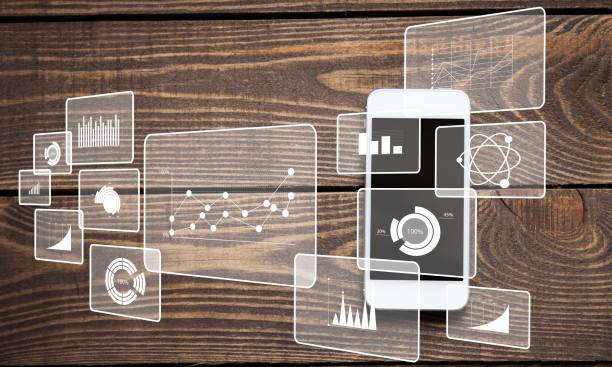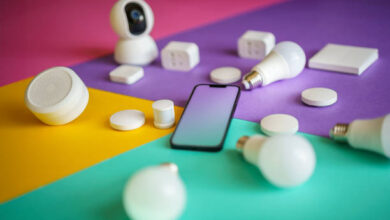How To Build a Real-Time IoT Dashboard For Data Visualization

An IoT dashboard is a visual representation of data collected from IoT devices. It allows you to monitor and track data in real time, helping you to make informed decisions and take timely action.
Real-time IoT dashboards are particularly useful for applications where it is important to be able to respond quickly to changes in data, such as monitoring industrial processes, tracking supply chains, and managing energy consumption.
In this article, we will discuss how to build a real-time IoT dashboard for data visualization. We will cover the following topics:
- What is a real-time IoT dashboard?
- Benefits of using real-time IoT dashboards
- How to build a real-time IoT dashboard
- Examples of real-time IoT dashboards
- FAQs
What is a real-time IoT dashboard?

According to Techcrunch, a real-time IoT dashboard is a visual representation of data collected from IoT devices in real time.
It allows you to monitor and track data as it is being generated, helping you to identify trends and patterns that may not be visible from historical data.
Real-time IoT dashboards can be used in a variety of applications, including:
- Industrial process monitoring: Real-time IoT dashboards can be used to monitor industrial processes, such as temperature, pressure, and flow rates. This allows you to identify potential problems early on and take corrective action before they cause damage or downtime.
- Supply chain tracking: Real-time IoT dashboards can be used to track the movement of goods through a supply chain. This allows you to identify delays and bottlenecks, and to ensure that goods are delivered on time and in good condition.
- Energy consumption management: Real-time IoT dashboards can be used to track energy consumption in real time. This allows you to identify areas where energy is being wasted and to make changes to reduce your energy consumption.
Benefits of using real-time IoT dashboards
There are a number of benefits to using real-time IoT dashboards, including:
- Improved decision-making: Real-time IoT dashboards provide you with the information you need to make informed decisions quickly. For example, if you are monitoring an industrial process and you see that a temperature is rising too high, you can take immediate action to prevent a problem.
- Reduced downtime: Real-time IoT dashboards can help you to reduce downtime by identifying potential problems early on. For example, if you are monitoring a supply chain and you see that a shipment is delayed, you can take steps to get the shipment back on track.
- Increased efficiency: Real-time IoT dashboards can help you to increase efficiency by providing you with insights into how your processes are working. For example, if you are monitoring energy consumption and you see that a particular piece of equipment is using more energy than it should be, you can take steps to reduce its energy consumption.
How to build a real-time IoT dashboard
There are a few key steps involved in building a real-time IoT dashboard:
- Choose a data source: The first step is to choose a data source for your dashboard. This could be an IoT platform, a database, or even a spreadsheet.
- Choose a dashboarding tool: There are a number of different dashboarding tools available, both commercial and open source. Choose a tool that meets your needs and budget.
- Connect your data source to your dashboarding tool: Once you have chosen a data source and a dashboarding tool, you need to connect them together. This will allow your dashboard to display data from your data source in real time.
- Create your dashboard: Once your data source is connected to your dashboarding tool, you can start creating your dashboard. This involves adding widgets and charts to your dashboard to visualize your data.
- Deploy your dashboard: Once you have created your dashboard, you need to deploy it so that you can access it from anywhere. This may involve publishing your dashboard to the cloud or installing it on a local server.
Examples of real-time IoT dashboards
Here are a few examples of real-time IoT dashboards:
- Industrial process monitoring dashboard: This dashboard monitors the temperature, pressure, and flow rates of an industrial process. It also displays alerts if any of the values exceed a predetermined threshold.
- Supply chain tracking dashboard: This dashboard tracks the movement of goods through a supply chain. Techtarget.com says it displays the location of each shipment and its estimated arrival time.
- Energy consumption management dashboard: This dashboard tracks energy consumption in real time. It displays the energy consumption of each piece of equipment and the total energy consumption of the building.
FAQs How to build a real-time IoT dashboard for data visualization
What are some of the challenges of building a real-time IoT dashboard?
Some of the challenges of building a real-time IoT dashboard include:
- Data quality: It is important to ensure that the data being displayed on your dashboard is accurate and reliable. This can be challenging if you are collecting data from a variety of different sources.
- Data latency: Real-time IoT dashboards need to be able to display data with minimal latency. This can be challenging if you are collecting data from devices that are located far away or if you are using a complex dashboarding tool.
- Security: It is important to secure your real-time IoT dashboard to prevent unauthorized access. This is especially important if you are displaying sensitive data on your dashboard.
What are some of the best practices for building a real-time IoT dashboard?
Some of the best practices for building a real-time IoT dashboard include:
- Use a reliable data source: Choose a data source that is known for its reliability and accuracy.
- Use a scalable dashboarding tool: Choose a dashboarding tool that can scale to meet your needs as your data volume and user base grow.
- Optimize your dashboard for performance: Make sure to optimize your dashboard for performance to minimize latency.
- Use security measures: Implement security measures to protect your dashboard from unauthorized access.
What are some of the future trends in real-time IoT dashboards?
Some of the future trends in real-time IoT dashboards include:
- The use of artificial intelligence (AI): AI will be used to make real-time IoT dashboards more intelligent and insightful. For example, AI can be used to identify patterns and trends in data that would be difficult for humans to see.
- The use of machine learning (ML): ML will be used to personalize real-time IoT dashboards for individual users. For example, ML can be used to recommend specific widgets and charts to users based on their interests and needs.
- The use of augmented reality (AR) and virtual reality (VR): AR and VR will be used to create more immersive and interactive real-time IoT dashboards. For example, AR can be used to overlay data on the real world, and VR can be used to create a virtual environment where users can interact with data in a more natural way.
Conclusion
Real-time IoT dashboards are a powerful tool for monitoring and tracking data in real time. They can be used to improve decision-making, reduce downtime, and increase efficiency.
If you are considering building a real-time IoT dashboard, be sure to choose the right data source and dashboarding tool, and to implement security measures to protect your dashboard from unauthorized access.
Additional tips:
- Start small: Don’t try to build a complex dashboard right away. Start by building a simple dashboard with a few key metrics.
- Get feedback from users: Once you have a prototype dashboard, get feedback from users to see what they like and don’t like.
- Iterate: Once you have feedback from users, make changes to your dashboard and iterate until you are happy with it.
Building a real-time IoT dashboard can be a challenge, but it is a worthwhile investment. By following the tips above, you can build a dashboard that will help you to make better decisions and improve your business.








